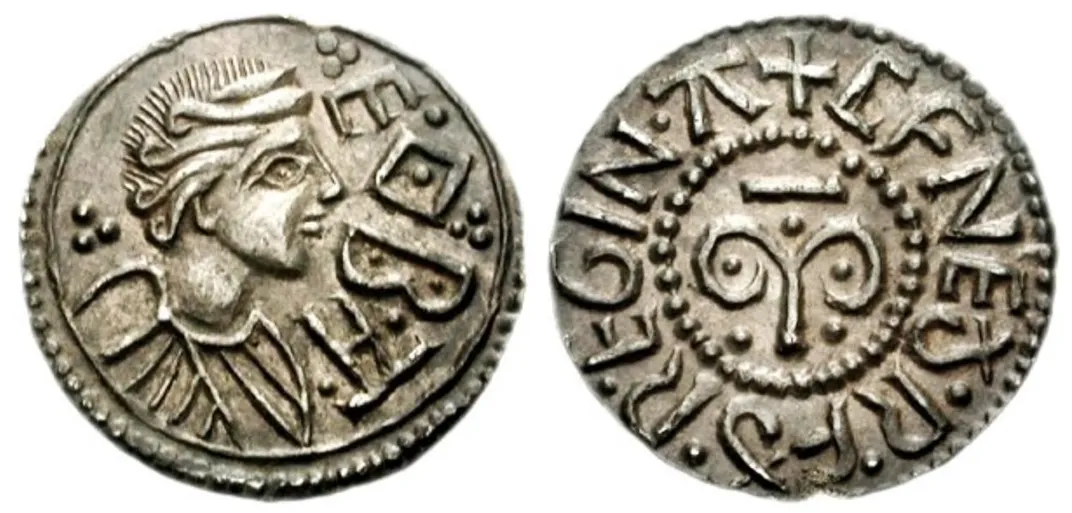Lost Monastery Run by Early Medieval Queen Discovered in England
Cynethryth ruled alongside her husband, King Offa of Mercia, during the seventh century C.E.
:focal(436x274:437x275)/https://tf-cmsv2-smithsonianmag-media.s3.amazonaws.com/filer/dd/f6/ddf65cbb-6dad-4329-b912-34ad0d1e66c8/monastery.jpeg)
Archaeologists have discovered the remains of a long-lost monastery where early medieval queen Cynethryth presided as abbess in the late seventh century C.E.
The team, including researchers from the University of Reading and local volunteers, found evidence of timber buildings where monks and nuns lived, as well as clay cooking pots, jewelry and personal belongings, reports BBC News. The scholars say the site, in the village of Cookham in Berkshire, England, may also hold Cynethyrth’s grave.
“Despite its documented royal associations, barely anything is known about what life was like at this monastery, or others on this stretch of the Thames, due to a lack of archaeological evidence,” says excavation leader Gabor Thomas, an archaeologist at the University of Reading, in a statement. “The items that have been uncovered will allow us to piece together a detailed impression of how the monks and nuns who lived here ate, worked and dressed.”
Cynethryth was queen consort to King Offa of the kingdom of Mercia, wrote Susan Abernethy for Medievalists.net in 2015. While few written records of her reign survive, historians know that she was a prominent figure in the region’s politics at the time.
“Cynethryth and Offa were the ultimate power couple in eighth-century England,” Abernethy added.
Cynethryth is one of very few female leaders from the period to have a coin minted with her image, and Thomas says she was clearly an influential figure.
“When the powerful European leader Charlemagne wrote to his English counterparts, he wrote jointly to both King Offa and Queen Cynethryth, giving both equal status,” he explains in the statement. “We are thrilled to find physical evidence of the monastery she presided over, which is also very likely to be her final resting place.”

Following Offa’s death in 796, Cynethryth joined a religious order and became abbess of the monastery.
The monastery was one of many built along the Thames River, which was central to important early medieval trade routes, reports Nathaniel Bahadursingh for Archinect News. The Cookham site fell along the contested boundary between the kingdoms of Mercia and Wessex, which gave it particular strategic importance.
Though written records mention the existence of the monastery and Cynethryth’s position there, historians hadn’t known its exact location until now, notes Maev Kennedy for the Art Newspaper. The monastery’s remains are located next to the current site of Holy Trinity Church. Excavations showed that the building was constructed on a gravel island that raised it above areas that faced frequent flooding. The site was divided into zones, including a housing area and another with a cluster of hearths that were probably used for metalworking.
Early medieval rulers in what is now England began converting to Christianity at the end of the sixth century, according to the British Library’s Alison Hudson. Irish missionaries sent by Pope Gregory I spread the religion, along with the Latin alphabet and writing technologies that helped kings create systems of law to solidify their power. In the eighth century, Offa worked with the church to create a new archbishop in Mercia who consecrated his son as his successor.
During this time, monasteries were spreading across Britain, acting as education centers, economic hubs, and sites for healing and medical training.
The team hopes to return to the site at Cookham next summer for further excavations that could potentially reveal Cynethryth’s resting place.
/https://tf-cmsv2-smithsonianmag-media.s3.amazonaws.com/accounts/headshot/Livia_lg_thumbnail.png)
/https://tf-cmsv2-smithsonianmag-media.s3.amazonaws.com/accounts/headshot/Livia_lg_thumbnail.png)